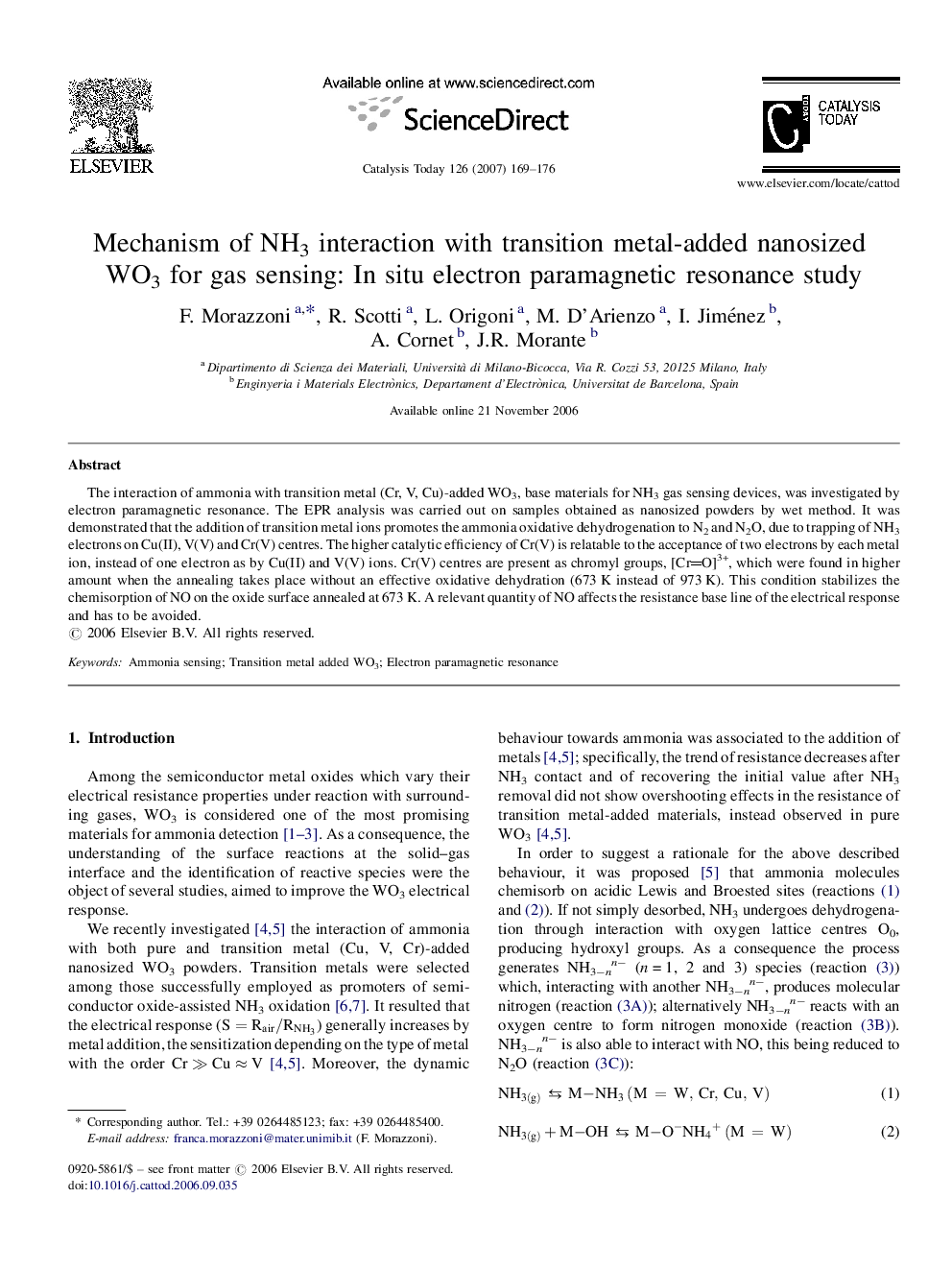| Article ID | Journal | Published Year | Pages | File Type |
|---|---|---|---|---|
| 57972 | Catalysis Today | 2007 | 8 Pages |
The interaction of ammonia with transition metal (Cr, V, Cu)-added WO3, base materials for NH3 gas sensing devices, was investigated by electron paramagnetic resonance. The EPR analysis was carried out on samples obtained as nanosized powders by wet method. It was demonstrated that the addition of transition metal ions promotes the ammonia oxidative dehydrogenation to N2 and N2O, due to trapping of NH3 electrons on Cu(II), V(V) and Cr(V) centres. The higher catalytic efficiency of Cr(V) is relatable to the acceptance of two electrons by each metal ion, instead of one electron as by Cu(II) and V(V) ions. Cr(V) centres are present as chromyl groups, [CrO]3+, which were found in higher amount when the annealing takes place without an effective oxidative dehydration (673 K instead of 973 K). This condition stabilizes the chemisorption of NO on the oxide surface annealed at 673 K. A relevant quantity of NO affects the resistance base line of the electrical response and has to be avoided.
